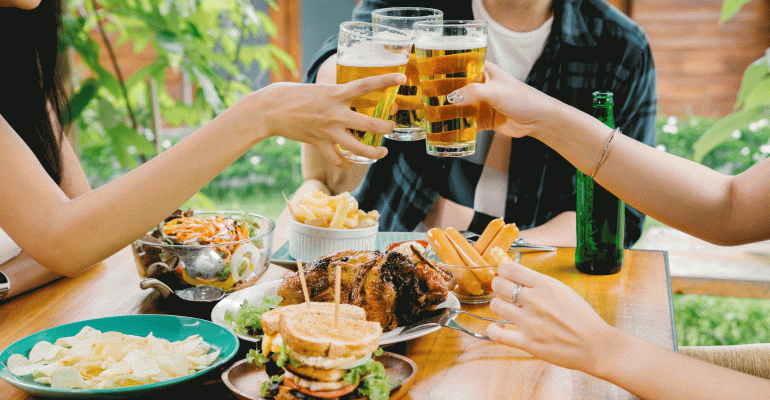From mobile ordering apps to in-store digital kiosks, technology has enabled restaurants to increase the speed of service for guests, but often at the expense of the dining experience. However, that may be changing as the latest research from The NPD Group reveals that today’s consumers are more interested than ever in memorable food and beverage experiences.
“The trend has been all towards speed, get in and out and turn the table,” said Warren Solochek, NPD vice president of industry relations. “People put more value on experience than they have in the past.”
One indication of consumers’ increased interest is that there is faster growth for experiential spending than the acquisition of “things,” NPD found.
Source: The NPD Group/Digital Evolution of Foodservice 2018
Additionally, 48 percent of consumers surveyed by NPD in 2017 said they planned to purchase food and beverage experiences as holiday gifts. The experiential purchase intent is strongest among Gen Z, Millennials, high-income households and households with kids.
Digital spending also skews experiential. Restaurant meals and snacks accounted for the second-highest percentage of mobile app purchases, after music.
Restaurant revisits can become experiential when operators use one of three levers: experts, eater-tainment or evolving technology, according to NPD. For example, club dinners, chef-created specialties and sommeliers all add an expert touch to the dining experience; food is the eater-tainment experience when customers stand in line for access to a buzzworthy restaurant; and dishes that are social-media-worthy align with evolving technology.
No matter the lever used, service is critical to the value proposition of restaurants.
“Service, how people are treated once they come into your store, is still really important,” Solochek said. “Restaurants can’t forget that human interaction is important.”
While those who want to talk to a real person at a restaurant have historically tended to be older generations, NPD found that younger generations are also craving more human interaction. Thirty percent of older Gen Z-ers (ages 13-20), 28 percent of Millennials (ages 21-26), 34 percent of Gen X-ers (ages 37-52) and 41 percent of younger Boomers (ages 53-64) preferred to talk to a person.
“There’s a very close relationship between service and how [consumers] rate their food and beverage,” Solochek said.

Technology and hospitality intersect
When Chicago-based Wow Bao, a 10-unit, fast-casual Asian chain that was an early adopter of self-ordering kiosks and mobile ordering, opened its first fully automated restaurant last December, some may have thought the intention was to cut people out of the people business. In fact, Wow Bao said it was all about bringing hospitality back to the industry.
“This is a way to up the game…be at the crossroads of hospitality and technology,” said Wow Bao CEO Geoff Alexander.
While guests at Wow Bao’s newest location can order and pay at a digital kiosk or online and then pick up their food from an LED-lit cubicle without any human interaction, the new prototype also includes a few front-of-house staff whose only job is to deliver guests hospitality, or whatever else they need.
“We can be fast, we can be slow, we can be funny,” Alexander said. “We’re about getting the food out in your hands and then having a pleasant conversation.”
Or not, depending the customer.
“It’s not just about how fast you can do it,” he added. “We have a responsibility to give value to diners…that’s more than just food, that’s interaction with people.”
Source: The NPD Group/Digital Evolution of Foodservice 2018
Delivering a singular experience
Guests of Le Coq Rico, a poultry house in New York City and Paris that serves contemporary French-American food, can make a reservation using an online platform, but that’s the end of the high-tech hospitality.
“We offer classic, attentive service—a direct, thoughtful interaction between our staff and our guests,” said chef and owner Antoine Westermann. “We want our guests to feel warmth and hospitality when they come to our restaurant—like they are having dinner in our home. That is the point.”
Diners are also treated to a unique experience at Le Coq Rico as the restaurant’s “poultry sommeliers” guide diners in understanding the flavor profile and aging process of responsibly raised, heritage-breed poultry that is served whole. The experience also extends beyond the restaurant to the diners’ home, as leftovers are packaged with printed recipes, such as Poultry Broth Bouillon with Seasonal Vegetables, to help transform extra food into a subsequent meal.
“It is very much inspired by Parisian culture,” said Westermann of the leftover packages. “This is in our roots, it's who we are—leftovers cannot, and should not, be wasted.”





